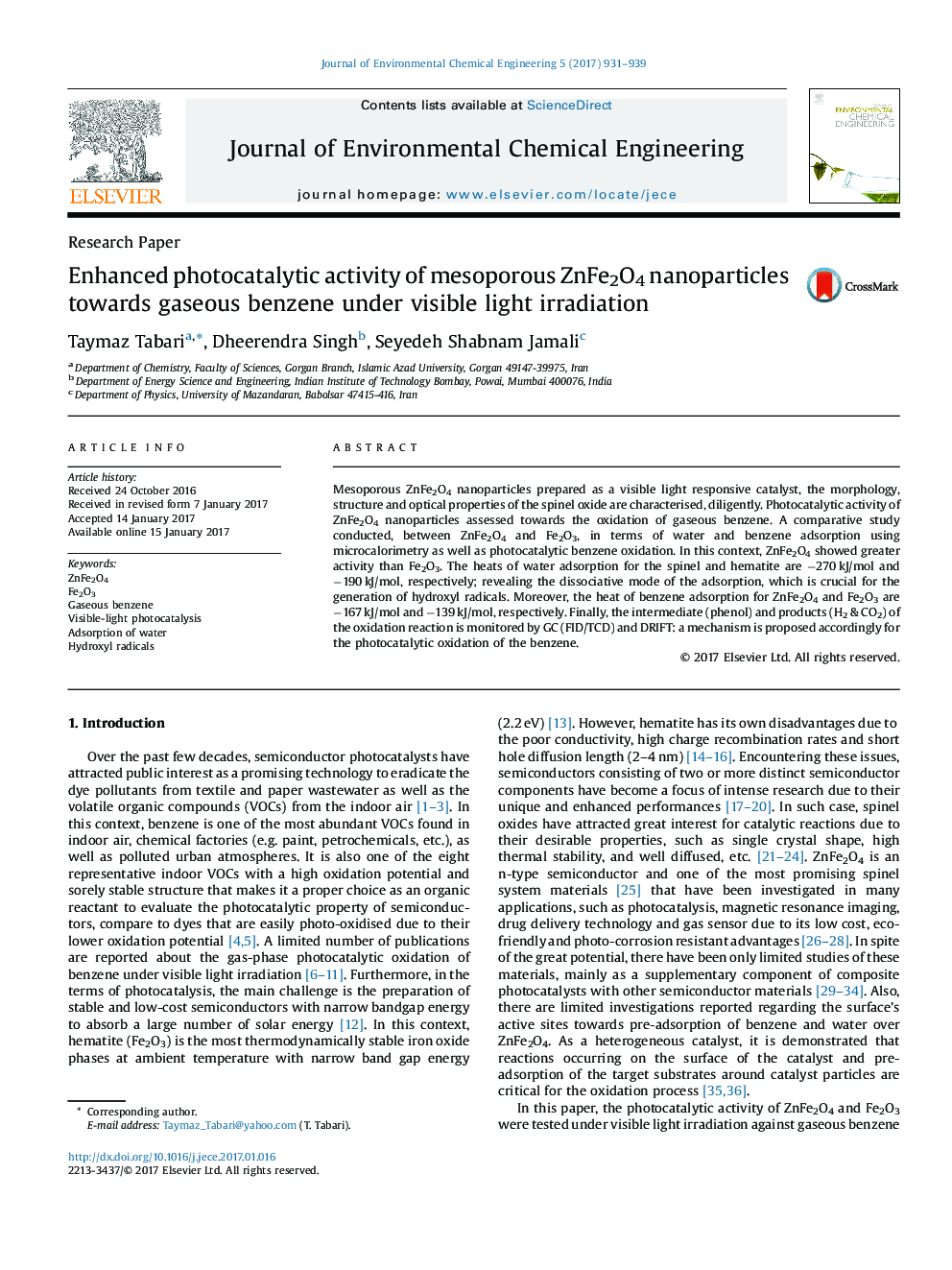| Article ID | Journal | Published Year | Pages | File Type |
|---|---|---|---|---|
| 6477534 | Journal of Environmental Chemical Engineering | 2017 | 9 Pages |
•Spinel ZnFe2O4 with mesoporous structure was obtained by sol-gel method.•ZnFe2O4 exhibited high degree of water and benzene adsorption compared to Fe2O3.•Dissociative mode of water adsorption on ZnFe2O4 favored hydroxyl radical generation.•Photocatalytic activity of ZnFe2O4 towards gaseous benzene decomposition was significant.
Mesoporous ZnFe2O4 nanoparticles prepared as a visible light responsive catalyst, the morphology, structure and optical properties of the spinel oxide are characterised, diligently. Photocatalytic activity of ZnFe2O4 nanoparticles assessed towards the oxidation of gaseous benzene. A comparative study conducted, between ZnFe2O4 and Fe2O3, in terms of water and benzene adsorption using microcalorimetry as well as photocatalytic benzene oxidation. In this context, ZnFe2O4 showed greater activity than Fe2O3. The heats of water adsorption for the spinel and hematite are −270 kJ/mol and −190 kJ/mol, respectively; revealing the dissociative mode of the adsorption, which is crucial for the generation of hydroxyl radicals. Moreover, the heat of benzene adsorption for ZnFe2O4 and Fe2O3 are −167 kJ/mol and −139 kJ/mol, respectively. Finally, the intermediate (phenol) and products (H2 & CO2) of the oxidation reaction is monitored by GC (FID/TCD) and DRIFT: a mechanism is proposed accordingly for the photocatalytic oxidation of the benzene.
Graphical abstractFigure optionsDownload full-size imageDownload high-quality image (103 K)Download as PowerPoint slide
